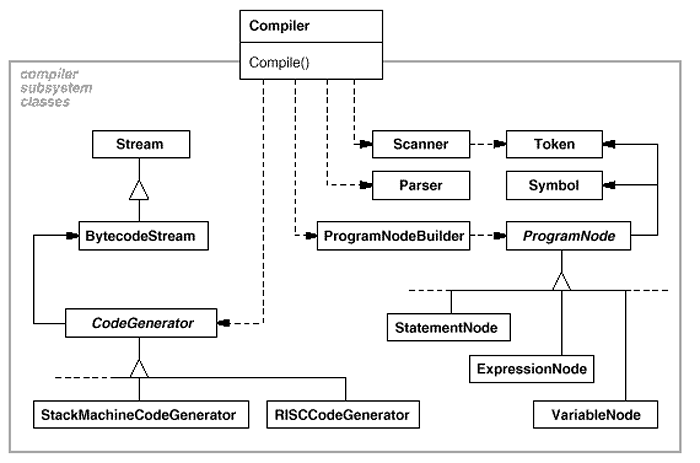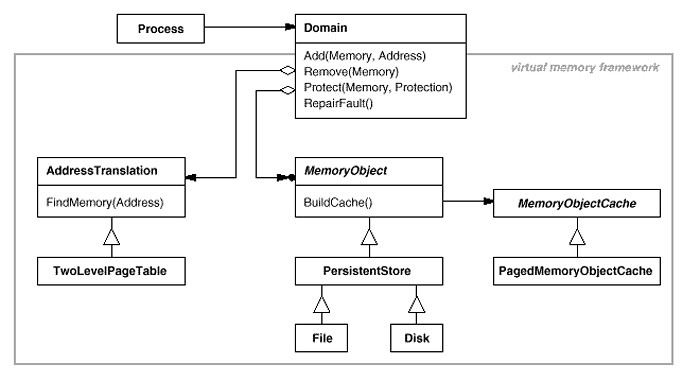Object-Oriented Programming
Design Pattern Facade
Michael L. Collard, Ph.D.
Department of Computer Science, The University of Akron
Facade
Provide a unified interface to a set of interfaces in a subsystem
Facade defines a higher-level interface that makes the subsystem easier to use
Facade: Motivation
Facade: Motivation

Facade: Structure
Facade
- Converts client requests into target class requests
- Allows a current class to be used by client code expecting a different interface
- Often, the first step towards replacement/major changes to a class with the "wrong" interface
- May add functionality missing in the target class
Facade: Applicability I
Use the Facade pattern when you want to provide a simple interface to a complex subsystem
- Subsystems often get more complicated as they evolve
- Most patterns result in more and smaller classes
- Subsystems are more reusable and easier to customize but also harder to use for clients that don’t need customization
- Facade provides a simple default view of the subsystem that is good enough for most clients
- Only clients needing more customizability look beyond the facade for more functionality
Facade: Applicability II
- There are many dependencies between clients and the implementation classes of an abstraction
- Decouple the subsystem from clients and other subsystems, thereby promoting subsystem independence and portability
- You want to layer your subsystems
- Define a Facade entry point to each subsystem level
- Simplify dependencies between subsystems by communicating solely through facades
Facade: Participants
- Facade (e.g., Compiler)
- Knows which subsystem classes are responsible for a request and delegates client requests to appropriate subsystem objects
- subsystem classes (e.g., Scanner, Parser, ProgramNode, etc.)
- Handle work assigned by the Facade object
- Do not know about the Facade, and keep no references or pointers to the Facade
- Are not marked as part of the pattern
Facade: Collaborations
- Clients communicate with the subsystem by sending requests to Facade, which forwards them to the appropriate subsystem objects
- Subsystem objects perform the actual work; the facade may have to work to translate the Facade interface to subsystem interfaces
- Clients that use the Facade don’t have to access its subsystem objects directly but can if needed
Facade: Consequences (Benefits)
- Shields clients from subsystem components, reducing the number of objects that clients deal with and making the subsystem easier to use
- Promotes weak coupling between the client and the subsystems
- Reduces the need for recompilation
- Simplifies porting to other platforms
- Allows a choice between ease of use and generality, as clients can use the subsystems directly
Implementation
Known Uses: Choices Operating System

Related Patterns
- Abstract Factory
- Used with Facade to provide an interface for creating subsystem objects
- An alternative to Facade to hide platform-specific classes
- Mediator
- A facade merely abstracts the interface to subsystem objects to make them easier to use
- Singleton
- Usually, only one Facade object is required, and Facade objects are often Singletons
